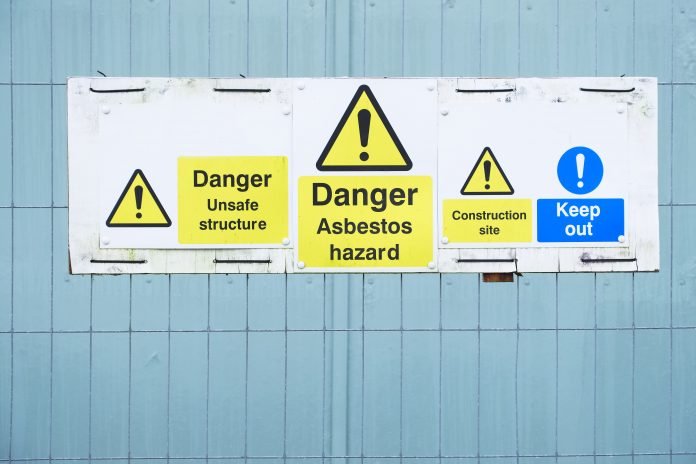A new report from ATaC and NORAC has found that asbestos remediation work is still needed on over 100,000 UK buildings, in a ‘best case scenario” assessment of the numbers
Extensive asbestos remediation work is still needed on more than 100,000 UK buildings, according to a new report from the Asbestos Testing and Consultancy Association (ATaC) and the National Organisation of Asbestos Consultants (NORAC).
The research suggests that the data represents a “best-case scenario” as it was provided by inspectors engaged by clients that were “compliance-conscious and aware of the regulatory requirements”.
In the UK, asbestos-related diseases take the lives of 20 tradespeople every week. Lung damage from inhalation of asbestos fibres can lead to mesothelioma, a lung cancer that can take up to 20 years to develop but become fatal within five years of doing so.
Industry experts are concerned about asbestos released in energy renovation works
The European Green Deal strategy aims to double the rate of energy renovations by 2030 to tackle energy-related greenhouse gas emissions, but many older buildings with a poor energy performance were constructed using asbestos.
Accelerating the building renovation rate could significantly increase the number of people exposed to asbestos-related health risks, since asbestos present in buildings could be released during renovation works. As a result, the European Commission estimates that the number of workers at risk will increase by 4% every year for the next decade.
Current data in the UK indicates that the risk of a fatal asbestos-related cancer is greatest among construction and engineering workers and the green renovation could make these trades even more vulnerable.
Tim Turney, global marketing manager at Casella shares best practice advice on asbestos monitoring
“Whenever asbestos is found and needs to be removed, it is a legal requirement to use licenced contractors and to ensure that strict regulations and guidance are followed to limit the potential release of dangerous, airborne fibres. However, discrepancies in sampling and analysis procedures, limitations in personal protective clothing and insufficient cleaning before a clearance pass can hinder accuracy and increase risks.”
“In the UK, a four-stage clearance process is used, involving a preliminary check of the site condition and job completeness, a thorough visual inspection inside the enclosure or work area, air monitoring and a final assessment of the post-enclosure or work area following dismantling. Licenced contractors may also take air samples before work is undertaken to establish a background level measurement. Conducting a test before disturbing any materials could save thousands of pounds on decontamination and environmental cleaning fees and help to avoid exposure.
“Additionally, trained professionals may take air samples during work on or near asbestos to confirm that there is no leakage from the enclosure. Using remote methods to support sampling, such as Bluetooth and a mobile ‘phone app, will help to protect personal exposure safety while gathering the necessary measurements.”
Air pumps should be an essential part of the asbestos remediation work process
“Air sampling pumps should be used for at least one hour after ensuring that equipment meets the relevant standard(s) and has the required flow-range capability, for example, at 12 L/min the required 480L sample can be completed in 40 minutes. Modern pumps can do timed or volume-based runs to achieve better result accuracy. However, reading the manufacturer’s handbook thoroughly before using the equipment can ensure correct use and allow for optimal feature use.”
“Ensuring air sampling equipment has an accurate flow rate to ensure flow is stable over the measurement will prevent measurements having to be repeated. Additionally, selecting an air sampling pump that has a good Ingress Protection (IP) rating will allow for easier decontamination, a process nearly as important as removing asbestos correctly in the first place.”
“Following stringent cleaning regimes can protect workers and their colleagues, family, and friends. All equipment must be thoroughly decontaminated to ensure there is no subsequent exposure or spread of asbestos. Choosing a high flow pump with a smooth body finish, free from small crevices, will allow for safer decontamination and cleaning. Modern air sampling pumps can also be monitored remotely with Bluetooth via a mobile’ app to check the sampling status, saving time checking pumps.”
“Asbestos monitoring has the power to save lives, but only when carried out correctly. Basic awareness training is not enough. Additional consultancy and training should always be acquired before carrying out asbestos removal to achieve the required level of competence and help keep more workers safe.”

















